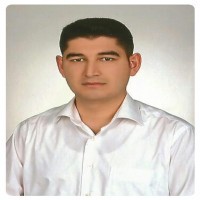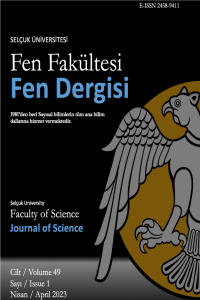Review
Aim & Scope
Publishing Content
Selcuk University Journal of Science Faculty of Science contains original scientific publications. Except for editorial studies, all published articles are subject to a double-blind peer review process.
Purpose and Scope
The aim of the journal is to contribute to science by publishing high quality publications of scientific importance. For this purpose, original research articles and reviews are published in all fields related to science.
Actuarial, Plant Sciences, Biodiversity, Biophysics, Biochemistry, Biology, Biotechnology, Environmental Sciences, Marine and Freshwater Biology, Pharmacy, Electrochemistry, Evolutionary Biology, Physics, Developmental Biology, Food Science and Technology, Cell Biology, Statistics, Chemistry, Mathematics, Mathematical and Computational Biology, Materials Science, Microbiology, Molecular Biology, Polymers, Spectroscopy, Agriculture, Toxicology, Applied Microbiology, and Life Sciences is an independent, double-blind peer-reviewed, open access, and online journal aiming to publish articles in all fields. Articles should describe original data that has not been previously published or submitted for publication elsewhere.
The articles that are deemed suitable for the Selcuk University Journal of Science Faculty submission rules and the scope of the journal are sent to at least two referees who are experts in their field for scientific evaluation. The members of the Editorial Board of the Science Journal of the Faculty of Science, Selçuk University, discussing its eligibility, then consider the comments of the reviewers regarding each submission. The final decision for all submitted articles rests with the Editor-in-Chief. The Editorial Board of Selcuk University Faculty of Science Science Journal undertakes to comply with the International Council of Medical Journal Editors (ICMJE), World Association of Medical Editors (WAME), and Committee on Publication Ethics (COPE) criteria.
Publication Language
Full Text Publication Language:
• Primary Language: Turkish
• Secondary Language: English
Content Written in English and Latin Alphabet:
• Article Title: Turkish & English
• Author's Name: Turkish (in Latin Alphabet)
• Author's Address: Turkish (in Latin Alphabet)
• Keywords: Turkish & English
• Bibliography: Turkish (in Latin Alphabet)
Full Text: Turkish (in Latin Alphabet)
Article Submissions
Submitted articles must be in accordance with the purpose and scope of the journal. Articles that are original, unpublished, and whose content and submission are approved by each author that are not in the process of being evaluated in another journal are accepted for evaluation.
Readership
The target audience is professionals, experts, researchers, specialization and doctoral students in all fields of Science, as well as students related to this field. It aims to contribute to the dissemination of continuous professional development and research culture.
Wage Policy
The publication of articles and the execution of article processes in the journal are free of charge. No processing fee or submission fee is charged for articles submitted to the journal or accepted for publication. Selcuk University, Faculty of Science, Journal of Science does not accept sponsorship and advertisement due to its publication policies. All expenses of Selcuk University Science Faculty Science Journal are covered by Selcuk University Science Faculty Dean's Office.
Copyright
The copyrights of the studies published in the Science Journal of Selçuk University Faculty of Science belong to their authors. The authors allow the intellectual work they sent to be published by Selçuk University Faculty of Science Journal of Science under a Creative Commons Attribution-NonCommercial 4.0 International (CC BY-NC 4.0) license.
Originality of Articles
Selçuk University Faculty of Science Journal of Science does not accept studies previously published elsewhere.
Author Guidelines
Manuscripts should be written in A4 (210 mmx297 mm) size, 12-point Times New Roman font, and double-spaced. There should be 2.5 cm margins on the right, left, bottom, and top of the page, and the texts should be right-left aligned. Each page and line of the manuscript should be numbered. The name(s) of the author should be written clearly and the academic title should not be stated. Manuscripts prepared in Turkish should be written by taking into account the latest spelling guide of the Turkish Language Association.
Manuscript: It should consist of Turkish Title, Turkish Abstract, Keywords, English Title, English Abstract, English Keywords, Introduction, Material and Method, Research Results, Discussion, Acknowledgments (if any), 6. References. Section names should be written in bold. If any, each figure and table should be placed in order after the place they are mentioned in the manuscript. At the end of the manuscript; a Statement of Contribution of the Researchers, a Statement of Support and Acknowledgment, if any, Statement of Conflict should be included.
Title: It should be short and descriptive, in 14 points and bold, the first letter of the words should be capitalized, written centered, and not exceeding 15 words. The English title must fully correspond to the Turkish title, written in 14 points and bold.
Abstract: Turkish and English abstracts should not exceed 300 words each. In Turkish and English abstracts, the words "Öz" and "Abstract" should be used, respectively. The abstract should include the purpose of the study, how it was done, the results and the author(s) comments on the results. References should not be used in the Abstract section.
Keywords: 1 line below the abstracts, the first letter of each keyword should be written in capital letters, the rest should be written in lowercase, if possible, maximum 6 keywords that are not used in the title and that best describe the work should be written.
Introduction: In this section; the subject of the study, its justification, previous studies directly related to the subject and the purpose of the study should be given.
Material and Method: In this section; the material and method used in the manuscript should be clearly stated.
Research Results: Obtained results should be given, if necessary, the findings should be explained, supported by charts, figures and graphics. Obtained findings should be given either as charts or graphs in order to avoid repetition. The factors that are found to be statistically significant should be interpreted with the comparison method in accordance with the statistical analysis technique applied and lettering should be made on the relevant statistics. In cases where the statistical analysis method is not chosen correctly and/or the analysis is not done properly, the editorial board may exclude the manuscript from evaluation.
Discussion: Findings should be discussed with current manuscripts about the study, but unnecessary repetitions should be avoided. The similarities and differences of the findings with other studies should be given and the reasons should be explained.
Acknowledgment: You should list acknowledgments at the end of the text, in a separate section before references, and not include them on the title page, as a footnote in the headline, or otherwise. In this section, you can list the natural and legal persons who provide financial or moral assistance during the research.
Author Contributions: For transparency, we encourage authors to submit an author statement file outlining their individual contributions to the paper using the relevant CRediT roles: Conceptualization; Data curation; Formal analysis; Funding acquisition; Investigation; Methodology; Project administration; Resources; Software; Supervision; Validation; Visualization; Roles/Writing - original draft; Writing - review & editing. Authorship statements should be formatted with the names of authors first and CRediT role(s) following.
Declaration of Conflict of Interest: Corresponding authors, on behalf of all the authors of a submission, must disclose any financial and personal relationships with other people or organizations that could inappropriately influence (bias) their work.
References: Citations and bibliography should be prepared with the Endnote program. Endnote-style files of our journal prepared in APA format are shared separately for Turkish and English manuscripts, with download links at the file upload step.
While writing the references list, the first author should be listed alphabetically according to the surname, the lines after the first line should start 1.0 cm from the right. Different works of the same author/authors should be listed starting from the old date, and works with the same date starting from a single author. References should be presented in their original language whenever possible. References that are not given in their original language can be given in Turkish or English. However, in this case, the original language of the source should be specified in parentheses.
• If the source is an article: Author's surname, initials., year, title of the article, name of the journal (italic), volume number (if any), page range.
Özgören, M., 2006, Flow Structure in the downstream of square and circular cylinders, Flow Measurement and Instrumentation, 17 (4), 225-235.
• If the source is a book: Author's surname, initial(s), year, name of the book, volume number, editor(s) / translation editors, if any, place of publication (italics), place of publication, page range.
Dasgupta, D., 1998, Artificial immune systems and their applications, Springer-Verlag, Berlin - Heidelnerg, 45-52.
Note: In translated books, the publication date of the translated book, not the original book, will be taken as a basis.
• If the source is the printed thesis: Author's surname, initial(s). (year), Title of the Thesis”, Type of Thesis (Master/PhD), Graduate School of the Thesis (italics), place of submission, page range.
• If the source is taken from the congress: Author's surname, initial(s), year, Name of the Paper, name of the congress, seminar or conference (italic), place, page range in the proceedings book.
Güneş, S. and Polat, K., 2009, Medical diagnostic support system based on the use of least square support vector machines in electrocardiogram (ECG) arrhythmia diagnosis, 13th Biomedical Engineering National Meeting, BİYOMUT-2009, İstanbul, 170-173.
• If the source is taken from the report: Author's surname, initial(s) (if the report is a legal entity, the name of the organization), year, name of the report, short name of the organization that prepared the report and report number (italic), place of publication (italic), page range .
De Castro, L. N. and Von Zuben, F. J., 2000, Artificial immune systems: Part I- Basic theory and applications, DCA-RT 02/00, Brasil, 23-28.
• If the source is taken from the current magazine and newspaper news:
Corliss, R., 1993, Pacific Overtures Times, 142 (11), 68-70.
• If the source is from a national study whose author is unknown:
Anonymous, 2006, Agricultural statistics summary, DİE Publications, Number; 12, Ankara, 22-23.
• If the source is taken from a foreign work whose author is unknown:
Anonymous, 1989, Farm accountancy data network, an A-Z of methodology, Commission Report of the EC, Brussels, 16-19.
• If more than one publication of the same author published in the same year is used, an alphabetic character is added to the end of the year of publication. For example, for three publications by the same author(s) in 2003 (2003a, 2003b, 2003c).
• Display for maps
Author's surname, initial(s)., year, Title, Scale, Publication: Publisher.
Mason, J., 1832, Map of the countries lying between Spain and India, 1:8.000.000, London: Ordnance Survey.
• Display for web pages
Author's surname, initial(s)., year, Title [online], (Edition), Place of Publication, Web address:URL [Date of Visit].
Holland, M., 2002, Guide to citing Internet sources [online], Poole, Bournemouth University,http://www.bournemouth.ac.uk/library/using/guide_to_citing_internet_sourc.html [Visit Date: November 4, 2002].
Figures and Tables: Figures, graphics, photographs and the like should be specified as "Figure" and numerical values as "Table". All figures and tables should be embedded in the manuscript. Figures and tables should be no more than 16x20 cm in length in single-page layout and 8 cm in width in double-column layout. The size of the figures and tables should be in a resolution that can be printed. Pictures supporting the research results should be in "jpg" format with 600 dpi resolution. Each table and figure should be cited in the text. All tables and figures should be numbered sequentially throughout the manuscript (Table 1 and Figure 1). Table and figure titles and descriptions should be short and concise. Headings for figures and tables should be in 10 points, texts in figures and tables should be in 9 points, texts under tables should be in 8 points Times New Roman font. If abbreviations are used in tables and figures, these abbreviations should be explained just below.
Units: SI (System International d'Units) measurement units should be used in all manuscripts. Use a dot as a decimal fraction (like 1.25 instead of 1,25). “/” should not be used in units and a space should be given between units (such as m s-1 instead of m/s, J s-1 instead of J/s, kg m s-2 instead of kg m/s2). A space must be left between the number and the symbol (such as 4 kg N ha-1, 3 kg m−1 s−2, 20 N m, 1000 s−1, 100 kPa, 22 °C). Exceptions to this rule are the degrees, minutes, and seconds symbols (°, ′, and ″) used for planar angles. They should be placed immediately after the number (like 10°, 45', 60"). The abbreviation of liter should be indicated as “l”. If they are not at the end of the sentence, do not put a period at the end of the symbols (kg, not kg.).
Formulas: Formulas should be numbered and the formula number should be shown in parentheses, aligned to the right next to the formula. Word math processor should be used in writing the formulas, main characters should be in 12 points, variables should be in italics, numbers and mathematical expressions should be given plain. If it is to be cited in the text, it should be given in the form of “Equation 1” (…the related model is given in Equation 1).
Address:
Selçuk Üniversitesi Fen Fakültesi
Fen Dergisi Editörlüğü
42075 Kampüs/Konya/Turkey
Fax: 0 332 241 24 99
E-mail: selcukfendergi@gmail.com
Web Page: https://dergipark.org.tr/sufefd
Ethical Principles and Publication Policy
Publication Ethics Principles
Publication Ethics can be defined as a self-regulatory mechanism that insists on honesty on behalf of authors, reviewers, and publishers to establish higher standards of editorial handling. Ethical standards for publication of high-quality scientific publications exist to ensure public confidence in scientific findings and respect for people's opinions.
• Honest researchers do not plagiarize.
• Does not cite sources incorrectly.
• They do not hide objections that they cannot refute.
• They do not distort opposing views.
• They do not destroy or hide data.
Peer-reviewed studies are studies that support and implement the scientific method. At this point, it is of great importance that all parties involved in the publication process (authors, readers, researchers, publisher, referees, and editors) comply with ethical principles. Selcuk University Journal of Science Faculty adheres to national and international standards in research and publication ethics. It complies with Press Law, Intellectual and Artistic Works Law and Higher Education Institutions Scientific Research and Publication Ethics Directive. Selcuk University Journal of Science Faculty has adopted the International Ethical Publishing Principles published by the Committee on Publication Ethics (COPE), Directory of Open Access Journals (DOAJ), Open Access Scholarly Publishers Association (OASPA), and World Association of Medical Editors (WAME). . It also undertakes to comply with the Decisions of the Türkiye Editors' Workshop.
• Press Law (National Legislation)
• Law on Intellectual and Artistic Works (National Legislation)
• Higher Education Institutions Scientific Research and Publication Ethics Directive (National Legislation)
• Transparency and Best Practice in Academic Publishing (International Criteria)
• Türkiye Editors' Workshop Decisions (National Criteria)
Republishing
Republishing is the publication of the same article or substantially similar articles in more than one journal. The editor returns this type of article without review. After that, the editor may impose an embargo on the author attempting to republish for a certain period of time, explain this situation to the public in the journal in which the author has previously published (perhaps as a simultaneous announcement with the editor of the journal that published the previous article), or apply all of these measures together.
Simultaneous submission of the same work to more than one journal
Authors cannot submit the same article to more than one journal at the same time. If the editor learns of possible simultaneous submission, he reserves the right to consult the other editor(s) receiving the article. In addition, the editor may return the article without review or reject it without considering the reviews, or take this decision by discussing it with other relevant editor(s) and may decide not to accept article submissions from the authors for a certain period of time. It can also write to the authors' employers or implement all of these measures together.
Plagiarism Prevention Control
To present the ideas, methods, data, practices, writings, figures or works of others as their own work, in whole or in part, without attribution in accordance with scientific rules.
Selcuk University Faculty of Science Science Journal scans all submitted articles to prevent plagiarism. The studies submitted for review are checked for plagiarism using Turnitin & Ithenticate software. The similarity rate is expected to be less than 20%. The main measure of the similarity rate is the author's compliance with the citation and citation rules. Even though the similarity rate is 1%, if the citation and citation are not duly made, plagiarism may still be in question. In this respect, citation and citation rules should be known and carefully applied by the author: ISNAD
Plagiarism, duplication, false authorship/denied authorship, research/data fabrication, article slicing, slicing, and copyright infringement and concealment of conflict of interest are considered unethical behaviors. All articles that do not comply with accepted ethical standards are removed from the publication. This includes articles with possible irregularities and inconsistencies detected after publication.
Forgery
To produce data that is not based on research, to edit or change the presented or published work based on untrue data, to report them, or to present an unpublished research as if it has been done.
To falsify research records and obtained data, to present methods, devices and materials that are not used in the research as if they were used, not to evaluate data that are not suitable for the research hypothesis, to manipulate the data and/or results in order to fit the relevant theory or assumptions, to falsify the research results in line with the interests of the people and institutions supported.
Protection of Participants' Personal Data
Selcuk University Journal of Science Faculty requires that all research involving personal or sensitive data or materials relating to human participants that is not legally available to the public is subject to formal ethical review.
Handling Allegations of Research Abuse
Selcuk University Faculty of Science Science Journal conforms to COPE's Ethics Toolkit for a Successful Editorial. Selcuk University Faculty of Science Journal of Science editors will take precautions to prevent publication of articles where plagiarism, citation manipulation, data falsification, data fabrication, and other research misconduct occur. Under no circumstances will the editors of Selcuk University Science Faculty Science Journal knowingly allow such abuse to take place. If the editors of Selcuk University Faculty of Science Science Journal are aware of any research misconduct allegations related to an article published in their journal, they will follow COPE's guidelines regarding the allegations.
Ethical Violation Notices
When readers notice an important error or mistake in an article published in the Science Journal of Selçuk University Faculty of Science, or have any complaints about editorial content (plagiarism, duplicate articles, etc.), they can send an e-mail to index.sufefd@selcuk.edu.tr. You can report by sending a mail. We welcome applications and respond promptly and constructively as they provide an opportunity for us to improve.
Correction, Withdrawal, Expression of Concern
Editors may consider publishing a correction if minor errors are detected in the published article that do not affect the findings, comments, and conclusions. Editors should consider retracting the article in case of major errors/violations that invalidate the findings and conclusions. Editors should consider issuing a statement of concern if there is evidence that the findings are unreliable and that the authors' institutions did not investigate the case if there is a possibility of abusive research or publication by the authors, or if the potential investigation appears unfair or inconclusive. Regarding correction, withdrawal, or expression of concern, the COPE and ICJME guidelines are considered.
Publication of Studies Based on Survey and Interview
Selcuk University Journal of Science Faculty adopts the principles of the Publication Ethics Committee (COPE) "Code of Conduct and Best Practice Guidelines for Journal Editors" and "Code of Conduct for Journal Publishers" in order to create ethical assurance in scientific periodicals. In this context, the following points should be followed in the studies submitted to the journal:
1) For research conducted in all branches of science that requires ethics committee approval (ethics committee approval should be obtained and this approval should be stated and documented in the article.
2) In studies that require ethics committee approval, information about the permission (name of the committee, date and number) and information about the informed consent/consent form signed in case reports should be included in the method section, as well as on one of the first/last pages of the article.
Special Issue Publishing Policy
A special issue can be published in our journal once a year upon the request of the Editorial Board. Articles sent for inclusion in a special issue are first subjected to editorial review. Then it is examined in terms of compliance with the writing rules of the journal and similarity is scanned to prevent plagiarism. After these stages, it is taken into the peer review process in which the double-blind model is used.
Editorial Confidentiality Obligation
The editors of Selcuk University Journal of Science Faculty treat all submitted articles as confidential documents. This means that they will not disclose information about an article to anyone without the permission of the authors. During the article review process, the following people can access articles: Editors, Reviewers, and Editorial Board Members. The only situation in which details about an article may be passed on to a third party without the consent of the authors is if the editor suspects serious research misconduct.
Allegations-Suspects of Scientific Misconduct
Scientific misconduct has different definitions. We address these issues on a case-by-case basis, while following the guidance created by the major publication ethics institutions. If the editor suspects an ethical violation or if there is an alleged violation, they are obliged to take action. This task covers both published and unpublished articles. The editor should not simply reject articles that raise concerns about possible abuse. Ethically, it is obliged to follow the alleged lawsuits. The editor should follow COPE flowcharts where appropriate. Editors should first seek a response from anyone suspected of misconduct. If they are not satisfied with the answer, they should ask the relevant employers or the institution to investigate. The editor should use all reasonable efforts to ensure that an appropriate investigation into the alleged misconduct is carried out. If this does not happen, the editor should make all reasonable attempts to persist in finding a solution to the problem. This is an arduous but important task.
Selcuk University Faculty of Science Science Journal conforms to COPE's Ethics Toolkit for a Successful Editorial. Editors will take precautions to prevent publication of articles where plagiarism, citation manipulation, data tampering, data fabrication, and other research misconduct occurs. In no event will the editors knowingly allow such abuse to occur. If the editors of Selcuk University Faculty of Science Science Journal are aware of any research misconduct allegations related to an article published in their journal, they will follow COPE's guidelines regarding the allegations.
When reviewers suspect research or publication abuse, they should notify the Editor. The editor is responsible for carrying out the necessary actions by following the COPE recommendations.
Selcuk University Faculty of Science Science Journal undertakes to apply it to COPE flow charts when faced with allegations of abuse on the following or similar topics.
• What to do when rebroadcast is suspected
• What to do when plagiarism is suspected
• What to do when fabricated data is suspected
• What to do in requests for change of authorship
• What to do when an undisclosed conflict of interest is suspected
• What to do when unfair or gift authorship is suspected
• What to do when an ethical problem is suspected in an article
• Actions to be taken when a direct notification is made via e-mail, etc., of suspected ethical violations.
• What to do when a suspected ethical violation is announced via social media
Complaint Procedure
This procedure applies to complaints about content, procedures, or policies that are the responsibility of Selcuk University Journal of Science Faculty or our editorial staff. Complaints can provide an opportunity and incentive for improvement, and we aim to respond quickly, courteously, and constructively.
The complaint must be related to the content, procedures, or policies that are the responsibility of Selcuk University Journal of Science Faculty or our editorial staff. Complaints should be emailed directly to index.sufefd@selcuk.edu.tr and will be treated confidentially. The editor immediately responds to complaints. The editor follows the procedure outlined in the COPE flowchart regarding complaints.
Complaints are reviewed by the relevant member of the editorial team and if they cannot be resolved, the following processes are followed:
• If this initial response is deemed inadequate, the complainant may request that their complaint be forwarded to a more senior member of the journal.
• Complaints can be forwarded to the editor-in-chief if the complainant is not satisfied.
• A full response will be given within two weeks if possible.
COPE publishes a code of practice for editors of scientific journals. These editors will facilitate the resolution of disputes with journals and publishers, but only after the journal's own complaints procedures are exhausted.
Appeal Process
We welcome serious objections to reviews by editors and reviewers. If you think we rejected your article because we misunderstood the scientific content, please send an objection message to our editorial team at index.sufefd@selcuk.edu.tr. Do not try to submit a revised version of your article at this stage. If, after reading your objection letter, we realize that your objection is justified, we may invite you to submit a revised version of your article. Thus, your work is sent back to the external referee process. Please include as much detail as possible in the appeal letter. Finally, we can only consider one objection per article. So please take the time and effort to write the letter in detail to make your objection clear. You have a chance. So use it well. We have found that prolonged negotiation over rejected articles is often unsatisfactory for both authors and editors, so we do not process multiple appeals for the same work.
Conflicts of Interest
A conflict of interest arises when a professional judgment regarding a primary interest may be affected by a secondary interest (such as financial gain or personal competition). We believe that in order to make the best decision on how to handle an article, we need to know the competing interests of the authors and that if we publish the article, the readers should know them too.
Any financial or other interest that could conflict with one's work, significantly impair objectivity, or provide an unfair advantage to any person or entity. All financial support resources and the role of sponsors in the study should be explained during the conduct of the research and the preparation of the article. If there is no source of funding, this should also be stated. Examples of potential conflicts of interest that should be disclosed include consultations, hiring, and grants. Potential conflicts of interest should be disclosed at the earliest possible stage.
Selcuk University Faculty of Science Journal of Science has a set process for handling submissions from editors, staff, or editorial board members to ensure unbiased review. Such posts are primarily directed to other journals. If this is not possible, the post's owner will be suspended from the journal. These submissions are reviewed through a double-blind process.
The editor should not be involved in decisions about articles written by him or his family members. In addition, such a study should be subject to all the usual procedures of the journal. The editor should follow the ICMJE guidelines regarding disclosure of potential conflicts of interest by authors and reviewers.
Principles of Research Ethics
Selcuk University Journal of Science Faculty observes the highest standards in research ethics and adopts the international research ethics principles defined below. The compliance of the articles with the ethical rules is the responsibility of the authors.
• Principles of integrity, quality, and transparency should be ensured in the design of the research, the review of the design, and the conduct of the research.
• The research team and participants should be fully informed about the purpose of the research, its methods, possible uses, the entailments of participation in the research, and the risks, if any.
• Confidentiality of information provided by research participants and confidentiality of respondents should be ensured. Research should be designed in a way that preserves the autonomy and dignity of the participants.
• Research participants should take part in the research voluntarily and should not be under any coercion.
• Damage to the participants should be avoided. Research should be planned in a way that does not put participants at risk.
• It should be clear and clear about research independence, and if there is a conflict of interest, it should be stated.
• Written informed consent must be obtained from participants who decide to participate in the research in experimental studies with human subjects. The consent of the legal guardian of children and custodians or those with a confirmed mental illness must be obtained.
• If the study will be carried out in any institution or organization, approval must be obtained from that institution or organization.
• In the “methods” section of studies with human elements, it should be stated that “informed consent” was obtained from the participants and ethics committee approval was obtained from the institution where the study was conducted.
Price Policy
The publication of articles and the execution of article processes in the journal are free of charge. No processing fee or submission fee is charged for articles submitted to the journal or accepted for publication. Selcuk University Journal of Science Faculty does not accept sponsorship and advertisement due to its publication policies. All expenses of Selcuk University Journal of Science Faculty are covered by Selcuk University Faculty of Science Dean's Office.
Indexes
Journal Boards
Editor in Chief
Chemistry Field Editor

Ahmed Nuri Kursunlu received the M.Sc. degree from Selcuk University, Konya, Turkey, in 2008, and the Ph.D in 2014. After that, he spent an additional year as a Research Fellow at the University of Hull (2010-2011). Moreover, he conducted a post-doc education on Pillar[n]arene in ECPM, Strasbourg University, France (2015-2016). In 2017, he was appointed as an Associate Professor at Selcuk University (Turkey). Currently, his research focuses on the BODIPY and pillar[5]arene formations and applications. he has finally worked as a Professor at Selcuk University, Türkiye since 2022.
Biotechnology Field Editor

Biyoteknoloji
Biology Field Editor
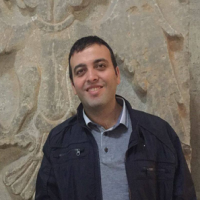
Physics Field Editor
Actuarial Field Editor
Mathematics Field Editor
Statistics Field Editor
Editorial Board



Mustafa Ozmen was born in Turkey, in 1981. He received the M.Sc. and Ph.D. degrees in Chemistry from Selcuk University, Konya, Turkey, in 2006 and 2011, respectively. He has been Professor at Selcuk University since 2021. His research interests include self-assembly, micro/nano patterning techniques, synthesis of nanoparticles (magnetic, gold, silver, TiO2, etc.) and their functionalization, electrochemical sensor applications, organic thin film deposition via Langmuir–Blodgett technique, and the spectroscopic and optical characterizations of organic thin film materials and their applications as gas sensor.
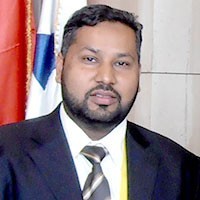

Dr. Serdar Karakurt, PhD, is a professor of Biochemistry at the Department of Biochemistry, Selcuk University, Türkiye. He earned his B.Sc. in Biology from Ege University and obtained his M.Sc. and Ph.D. degrees in Biochemistry from Middle East Technical University (METU). Following his doctoral studies, he conducted postdoctoral research in Finland, focusing on medicinal chemistry and molecular pharmacology. He is conducted advanced research as a visiting scientist at Tampere University, specializing in transcriptomics and proteomics-based approaches for cancer biology. His research group combines in vitro and in vivo models to investigate cancer biology, targeted drug delivery systems, and the therapeutic applications of bioactive compounds.
His in vitro studies explore the effects of biological agents (e.g., plant extracts, hormones, gene silencers) and chemical agents (e.g., active molecules, drug carriers, fluorescent probes) on cell proliferation, cytotoxicity, gene/protein expression, bioimaging, and enzyme activity in cancer and normal cell lines. His genomics work includes microarray and next-generation sequencing (NGS) analyses. In vivo research focuses on developing disease models for cancer and metabolic disorders.
Dr. Karakurt has served as principal investigator, advisor, or researcher on more than 58 national and international projects, including TÜBİTAK, EU-COST, SANTEZ, and bilateral collaborations. His portfolio includes cutting-edge research on therapeutic peptides from scorpion venom, nanoparticle-based drug delivery, phenolic compound anticancer mechanisms, and nanomaterial applications in wound healing and CBRN protection.
He has received over 25 national and international awards, such as the 3rd International Multidisciplinary Cancer Research Congress Best Basic Cancer Research Award (2023), EACR Young Cancer Researcher Award (2014), and Sigrid Juselius Foundation Foreign Scientist of the Year Award (2012). His publication record spans high-impact journals, and his interdisciplinary collaborations bridge biochemistry, molecular biology, pharmacology, nanotechnology, and biotechnology.

He is Editor-In-Chief of “Anti-Cancer Agents in Medicinal Chemistry” (Bentham Science Publishers, Q3 in Chemistry, Medicinal) (19/11/2020).
He is Co-Editor of Current Medicinal Chemistry (Bentham Science Publishers, Q2 in Chemistry, Medicinal) (01/3/2021).
He is Co-editor-in-chief of “Anti-Inflammatory and Anti-Allergy Agents in Medicinal Chemistry” (Bentham Science Publishers) (24/5/2016).
He was involved as a Section Editor for “Current Enzyme Inhibition” (Bentham Science Publishers) (01/09/2020-14/06/2021).
He is also a member of the Editorial Board of “Antioxidants” (MDPI, Q1 in Chemistry, Medicinal), “Expert Opinion on Therapeutic Patents” (Taylor & Francis, Q1 in Chemistry, Medicinal), “Bioorganic Chemistry” (Elsevier, Q1 in Chemistry, Organic, Q1 in Biochemistry & Molecular Biology), “Mini-Reviews in Medicinal Chemistry” (Bentham Science Publishers, Q2 in Chemistry, Medicinal), “Antibiotics” (MDPI, Q1 in Pharmacology & Pharmacy, Q2 in Infectious Diseases), “CNS & Neurological Disorders – Drug Targets” (Bentham Science Publishers, Q3 in Pharmacology & Pharmacy, Q3 in Neurosciences) and Scientifica (Hindawi).
He was appointed as Review Editor in Frontiers in Oncology (Section “Cancer Molecular Targets and Therapeutics”, 27/06/21) and in Frontiers in Drug Safety and Regulation (Section “Substance-Based Medical Devices” 31/10/21).
Guest Associate Editor in “Medicinal and Pharmaceutical Chemistry” and Review Editor in “Cancer Molecular Targets and Therapeutics”, “Ethnopharmacology” and “Substance-Based Medical Device” for Frontiers Publisher.

Dr. Syed Tufail Hussain Shah is a Professor & Director at the National Centre of Excellence in Analytical Chemistry, University of Sindh, Jamshoro, Pakistan. The Ph. D degree was awarded in 1997 from the same institution on “Quantitative Analysis of Fatty Acid Composition of Some Vegetable Oils by 13C-NMR and Chromatographic Methods”. After Ph. D, Dr. Shah started his career in edible oil industries, and he worked at responsible posts in the Edible Oil and Oilseed Processing Industries. He was the General Manager in the Edible Oil Industry when left the industry and joined the National Centre of Excellence in Analytical Chemistry in 2004. In 2005, he went to Singapore (Agilent Technologies) for one-week training on GC-MS. He learned the operation of GC-MS and application of modern GC-MS in various fields. In 2006, Dr. Shah completed his postdoctoral study in McGill University, Canada. During postdoctoral study, he gained expertise on FT-IR instrumentation and its application in the field of food chemistry. Mainly he worked on assessment of trans fat in the edible oils which is a health related startling issue all over the world. Dr. Shah presented his research work in many International and National conferences, symposia and workshops and is author of more than 230 research articles published in peer review and high repute impact factor journals. Dr. Shah is author of 5 review articles and 9 book chapters. He is a member of the Executive Editorial Board of two National and two International Journals. He has three Patents; one by USPTO and two patents are accepted and granted by IPO, Pakistan. Dr. Shah produced 27 Ph. D and 30 M. Phil Research Scholars. Dr. Shah is visiting Professor in McGill University, Canada, Selcuk University, Konya, Turkey.
Dr. Shah received Research Productivity Award (RPA) from Pakistan Council of Science and Technology (PCST), Ministry of
Science and Technology, Pakistan from 2009 to 2016. Dr. Sherazi received Best University Teacher Award (BUTA) in 2013 from Higher Education Commission (HEC), Pakistan and Gold Medal Award in Chemical and Pharmaceutical Sciences during 2016 by Pakistan Academy of Sciences on the basis of his best performance in Teaching & Research, Guiding Research Students, Co-curricular activities and Participation in International Conferences, Seminars and Symposia as an Invited speaker. On 21 January 2017, Award was given to Dr. Shah during 2nd Pakistan Edible Oil Conference (PEOC) 2017 on his invaluable contribution towards Edible oil Processing Industries. He received South Asia Triple Helix Association (SATHA) Award 2017 on the basis of published patent, significant innovation and effective contribution to the society during the 2nd SATHA Invention to Innovation Summit 2017 of Sindh held on December 20, 2017. Dr. Shah received Gold Medal Award by University of Sindh Jamshoro during Convocation held on March 9, 2018 on his valuable contribution of teaching and research. He has received Best University Teacher/Researcher Award from University of Sindh, Jamshoro during Convocation held on December 21, 2019 based on his contribution in terms of publications, impact factor, projects, National and International conference participation as well as teaching. Dr. Shah received Academia Choice Award 2021 on World Teacher Day, October 5, 2021 at PC Hotel, Karachi due to the valuable contribution and efforts for the betterment of Education in Pakistan.

Teoman Öztürk, Selçuk Üniversitesi Fizik Bölümü'nde öğretim üyesidir. 2012 yılında doktora derecesini aldıktan sonra TÜBİTAK'tan uluslararası doktora sonrası araştırma bursu kazandı ve 2013-2014 yılları arasında Michigan Üniversitesi'nde ziyaretçi araştırmacı olarak çalıştı. Mevcut araştırma ilgi alanları boya duyarlı güneş hücreleri, fotokataliz, fotodiyotlar ve perovskit güneş hücreleri dahil olmak üzere güneş enerjisi ve nanoteknolojidir.

The research activity is aimed at the development and validation of chromatographic methods for the qualitative and quantitative determination of biologically active molecules in human and animal, cosmetics, food, and environmental complex matrices. These procedures have been applied to different analytes and drugs/drug associations also finding application in clinical and pre-clinical studies, to characterize new delivery systems of the active principle to improve their pharmacological properties. In the development of the method are applied predictive models and chemometric both for the optimization of extraction protocols and for final data processing. Particular attention is given to the innovative (micro)extraction techniques and new instrumental configurations for complex matrix quantitative analysis. Scientific activity is proven by more than 238 publications in International peer-reviewed Journals, by 18 book chapters and 7 books, by more than 30 oral and 160 poster communications at National and International conferences.
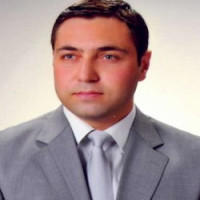
Salih Zeki Bas was born in Karaman, Turkey, in 1980. He received M.Sc. and Ph.D. degrees in chemistry from Selçuk University, Konya, in 2004 and 2011, respectively. He has been a professor at the Department of Chemistry, Selçuk University, since 2023. His research interests are electrochemical sensors and biosensors, enzyme kinetics, polymer modification kinetics.

Works in fixed point theory and applications.
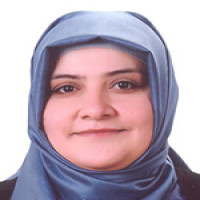
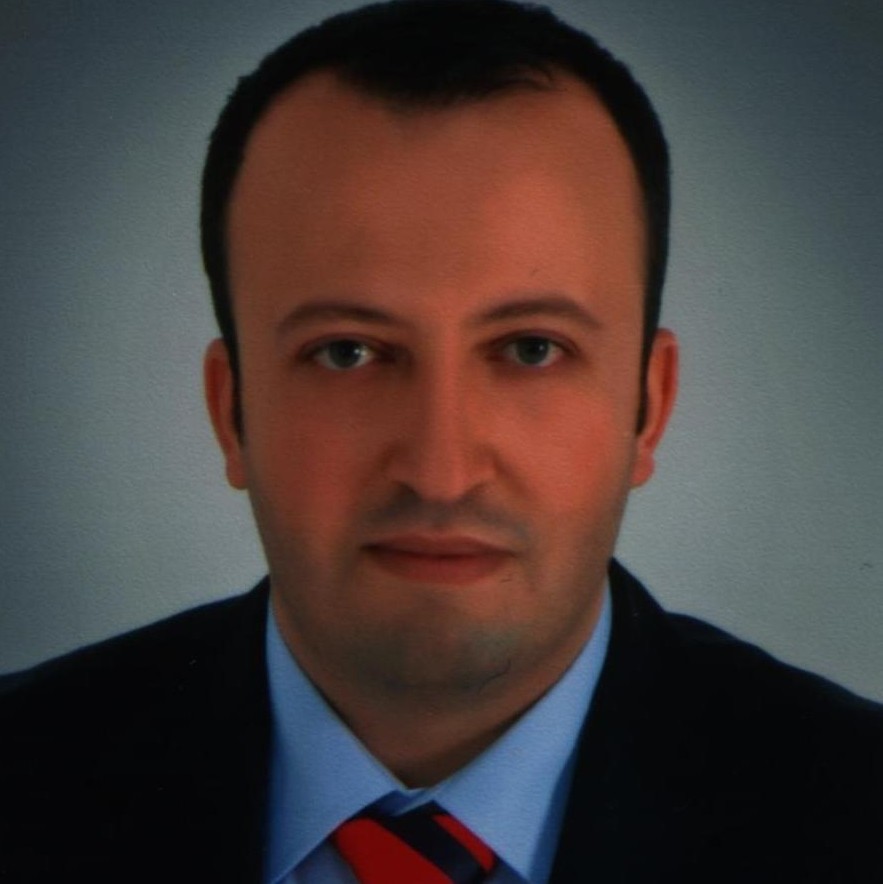




 Web
Web
İstatistik
Advisory Board
Turkish Language Editor
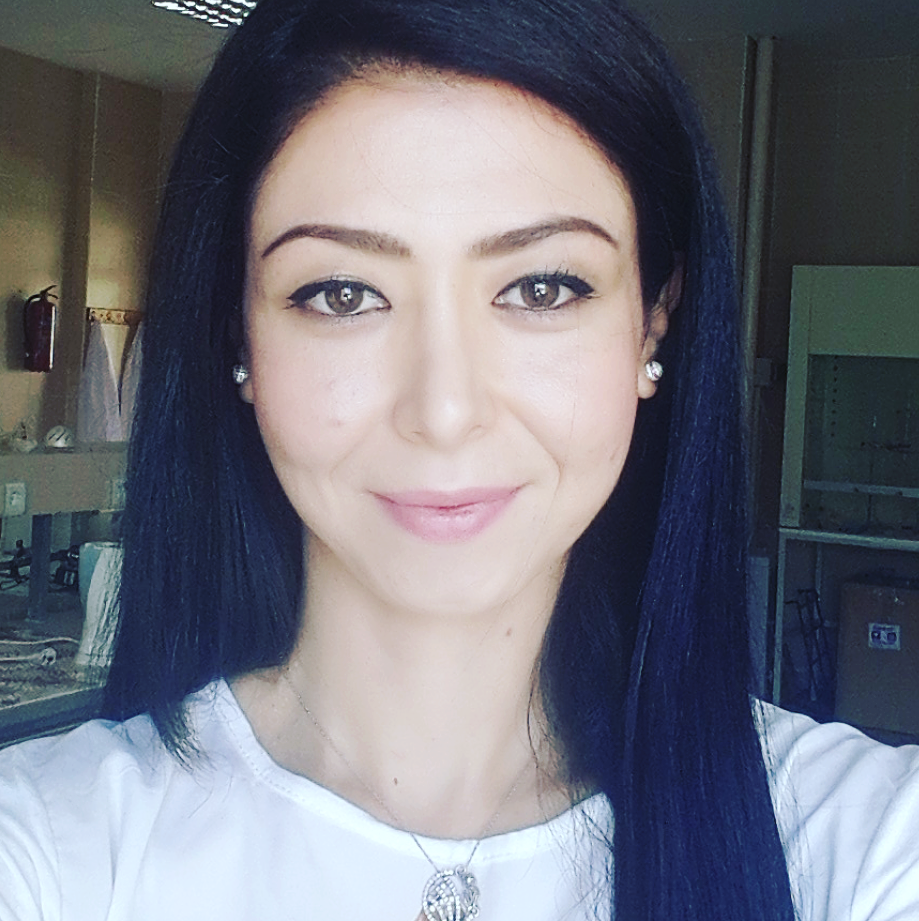
Kimya
English Language Editor
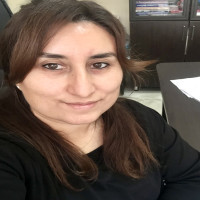
Doç. Dr. Aslıhan YILMAZ OBALI lisans derecesini 2007 yılında Hacettepe Üniversitesi Kimya Bölümü’nde (İng.) almıştır. 2008 yılında Araştırma Görevlisi olarak Selçuk Üniversitesi’ne atanmıştır. Aynı yıl yüksek lisans aşamasında İngiltere Kingston upon Hull Universitesi’nde araştırmalarda bulunmuştur. Yüksek Lisans (2010) ve Doktora (2016) derecelerini Selçuk Üniversitesi’nde inorganik kimya alanında tamamlamıştır. 2021 yılında Doçentlik ünvanını almıştır. 2022 yılından beri öğretim üyesi olarak Selçuk Üniversitesi’nde görev yapmaktadır. Alanında birçok ulusal ve uluslararası çalışmaları bulunmaktadır. Araştırma konuları inorganik kimya alanındadır. Genel olarak floresans özellikli fenantren-imidazol ligant sentezleri, inorganik sensörler, geçiş metal kompleksler üzerine çalışmaları mevcuttur.
Layout Editor
Editorial Board
Advisory Board
Journal Owner: On behalf of Selçuk University Faculty of Science, Rector Prof. Dr. Hüseyin YILMAZ
Selcuk University Journal of Science Faculty accepts articles in Turkish and English with original results in basic sciences and other applied sciences. The journal may also include compilations containing current innovations.
It was first published in 1981 as "S.Ü. Fen-Edebiyat Fakültesi Dergisi" and was published under this name until 1984 (Number 1-4).
In 1984, its name was changed to "S.Ü. Fen-Edeb. Fak. Fen Dergisi" and it was published under this name as of the 5th issue.
When the Faculty of Letters and Sciences was separated into the Faculty of Science and the Faculty of Letters with the decision of the Council of Ministers numbered 2008/4344 published in the Official Gazette dated 3 December 2008 and numbered 27073, it has been published as "Selcuk University Journal of Science Faculty" between 2009-2025.
It has been scanned in DergiPark since 2016.

Selcuk Journal of Science is licensed under a Creative Commons Attribution-NonCommercial 4.0 International (CC BY-NC 4.0) License.













